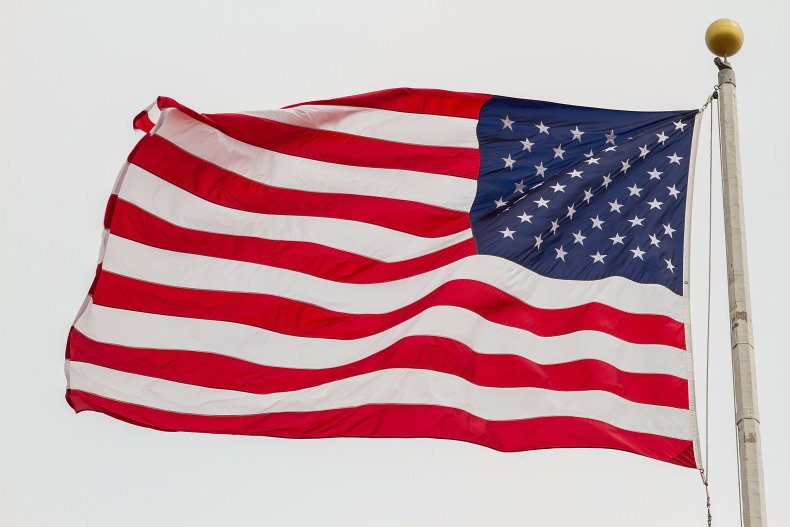Flag Day Meaning, History and Pictures to Celebrate Old Glory
Flag Day, observed annually on June 14, marks the day that the design of the U.S. national flag—once named "Old Glory"—was approved by Congress in 1777. The day sees flags and other symbols of patriotism displayed outside homes and buildings across the country.
The week of June 14 is also designated as National Flag Week, "calling upon all citizens of the United States to display the flag during that week," according to the White House.
In a statement on June 11, President Joe Biden said: "In the 244 years since, the United States has grown and changed across the generations—and our flag has changed in turn. The blue field of stars has been enlarged as our Union has gained in size and strength.
"The 13 stripes, symbolizing the 13 original States, have held as constant as the bedrock values upon which our Nation was first conceived—the very same values we still cherish, and still reach for, today," he added.
A brief history of Flag Day
The Second Continental Congress adopted the Stars and Stripes for the national flag on June 14, 1777.
"The first national observance of Flag Day took place 100 years after the original resolution on June 14, 1877," the U.S. Government Publishing Office explains.
According to the U.S. Department of Veterans Affairs, a flag of this design was first carried into battle during the Battle of the Brandywine on September 11, 1777.
The department says the flag was first saluted by foreign naval ships on February 14, 1778, "when the Ranger, bearing the Stars and Stripes and under the command of Captain Paul Jones, arrived in a French port."
It was first flown over a foreign territory in early 1778 at Nassau in the Bahamas, "where Americans captured a British fort," the department adds.
In 1916, President Woodrow Wilson issued a presidential proclamation for the national observance of Flag Day to take place on June 14.
The Library of Congress explains: "Congressional legislation designating that date as the national Flag Day was signed into law by President Harry Truman in 1949; the legislation also called upon the president to issue a flag day proclamation every year."
According to the Department of Veterans Affairs, the name "Old Glory" for the national flag was first coined by a sea captain who received the flag for his 21st birthday on March 17, 1824 from his mother and a group of local women.
Delighted with the gift, Capt. William Driver exclaimed "I name her Old Glory" and the flag joined him on many of his voyages.
The department said: "Captain Driver quit the sea in 1837 and settled in Nashville, Tenn. On patriotic days, he displayed Old Glory proudly from a rope extending from his house to a tree across the street."
Pictures to celebrate Flag Day
Several images themed around the U.S. flag can be downloaded from websites such as Unsplash, Pixabay and WallpaperAccess to share on Flag Day.
Unsplash offers a selection of around 10,000 free images themed around Flag Day, including ones featuring flags seen across cemeteries for U.S. veterans and grass fields. The images can be downloaded directly from the website.
Users of Pixabay can choose from around 900 images themed around the American flag and Flag Day. The images offered range from collages featuring the Statue of Liberty against a flag backdrop to U.S. flags seen in different settings, such as on the moon. The images are also available to download directly from the Pixabay website.
WallpaperAccess also offers at least 51 different American flag-themed images that can be downloaded from the website to be used as a background for your phone or computer.


